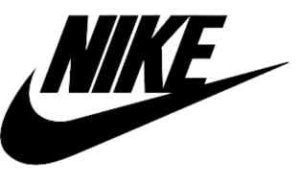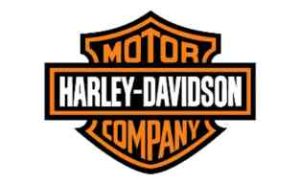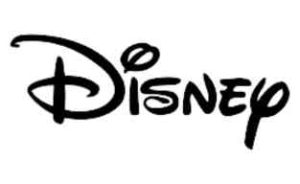Defining your vision and mission statement for your business.
One of the topics we here at ActionCOACH address early on with our clients is having a well-defined vision and mission for your business. It is essential to setting yourself up for success. It can provide clarity and direction, helping you to make decisions that are in line with your goals. But how do you go about creating a clear vision and mission for your business? It involves some thought, research and self-reflection. In this article, we’ll discuss the importance of having a vision and mission statement, as well as practical tips on how to define them for your business. By the end of this article, you’ll have a better understanding of how to craft a meaningful vision and mission statement that will guide your business forward.
How do you go about creating a compelling vision and mission statement for your business?
- Identify your purpose: Ask yourself why you started the business in the first place and your company’s reason for existence.
- Create your unique company vision statement: Where do you want to take your business in, say, the next 5 years?
- Put it in writing: Write a vision statement that provides a vivid description of the future of your company. Write a mission statement that defines your company’s purpose.
- Communicate with stakeholders: Share your vision and mission with everyone in the company and your customers so that everyone is aligned and on the same page about where the company is headed so you can make your vision a reality.
We recommend that you define your company culture, your future goals, and your Unique Selling Proposition.
Alongside your vision and mission statement, you must also:
- Define your core values: Determine what company values serve as a guide to your decisions and shape how you and your employees interact and behave with your customers. This is your opportunity to build a strong company culture.
- Set achievable goals: You must set future goals that are achievable within the timeframe of your vision statement.
- Create a succinct customer-centric Unique Selling Proposition (USP) statement. A memorable message that identifies the unique benefits that are derived from using your product or service as opposed to a competitor’s.
We will deal with these three topics in separate articles.
Why is having a future vision and mission important?
Our motivation as human beings start with “I am going to do this because I want it”.
The heart loves a purpose, a reason for doing something, whether you are the owner, a shareholder, employee or customer everyone requires this connection to feel inspired and motivated.
So we begin by defining our purpose. I personally use Purpose instead of Mission. So we will use Purpose through the rest of this article. As I explain at the end of this article, there are occasions where having both a Purpose and Mission statement can help.

Join the NoLimits Business Community
Are you a business owner looking to take your business to the next level? Join our innovative community of like-minded professionals and gain access to a wealth of valuable resources, including a community portal to chat with other business owners, ebooks, business development software, and growth events that will transform the way you do business. Best of all, these resources are completely free and will be available to you forever.
But the benefits of joining our NoLimits business community don’t stop there. By becoming part of our community, you’ll have the opportunity to connect with other business owners, share insights and ideas, and build valuable relationships that will help your business thrive. Don’t miss out on this amazing opportunity to supercharge your business and join us today!

Defining Your Purpose
Your Purpose defines your WHY. Your company’s reason for existence. It answers the question “Why?” rather than just explaining what you do. Great organisations have a deep and noble sense of purpose – a significant purpose – that inspires excitement and commitment. It is not about ‘shareholder wealth’ or ‘business owner’ wealth. Your purpose remains fixed even though strategy changes.
A great purpose statement incorporates these areas:
- Why does what you do matter, and what impact on the world are you making?
- It clarifies – from your customers’ viewpoint – what business you are really in.
- Why would your customers (or the world) miss you if you were not around?
- What drives you to succeed, get results and achieve your goals for the future?
A brilliant way to define your purpose is a technique known as the 5 whys:
Ask ‘Why?’ 5 times. Why does my business exist? Each time you ask yourself this question will define a deeper and more noble sense of purpose. Keep asking until you get to your version of “save the world.” Your first attempt is likely to be quite superficial and probably more about what your business does rather than why you exist. Your subsequent attempts will enable you to go increasingly deeper with each level. It is a good idea to have another person keep asking you Why.
Here are 3 famous companies in the world that in my opinion define their greater noble sense of purpose (while making lots of money):
Nike
“To bring inspiration and innovation to every athlete* in the world”
*If you have a body, you are an athlete“
Harley-Davidson
“More than building machines, we stand for the timeless pursuit of adventure. Freedom for the soul”
Disney
“Creating happiness through magical experiences”
Vision Statement
Your company vision statement defines where do you want to take your business in the future, say, for instance, the next 5 years?
The statement serves to answer the question “how will you define company success in 5 years?”
Unlike your purpose statement, company vision is not fixed in time. You will change your vision statement at the end of this 5-year period in order to define where you want to take your business in the proceeding 5 years.

Vivid description – a compelling picture of your company’s future:
Your vision statement provides:
- A picture of the end result, something you can actually see and is not vague.
- Focuses on what you want to create, not what you want to get rid of
- Focus on the end result, not the process for getting there!
- A concise vibrant, engaging and specific description of what it will be like to reach your long-term company’s goals.
- Describe what you want to see in the future!
- Be specific to your business.
- Be positive and inspiring.
- Be action-orientated.
- Do not assume that the system will have the same framework as it does today.
- Be open to dramatic modifications to the current company.
Vision Killers
Be alert to the following vision killers:
- Tradition
- Fear of ridicule
- Stereotypes of people, conditions, roles etc
- The complacency of some stakeholders
- Fatigued leaders
- Short-term thinking
- “Naysayers”
To provide some inspiration for your vision and purpose statements, here is a contemporary example that I like:
Tesla
Purpose: to accelerate the world’s transition to sustainable energy.
Vision: to create the most compelling car company of the 21st century by driving the world’s transition to electric vehicles.
Sony in the 1950’s
I also love this retro 1950’s purpose and vision from Sony, who clearly back then did not have the great reputation that they do today. These statements must have been at the heart of their company growth and their passion to become recognised for being the most innovative. This goes to show how these simple statements serve to motivate and inspire.
Purpose: To experience the sheer joy of innovation and the application of technology for the benefit and pleasure of the general public.
Vision: Become the company most known for changing the worldwide poor-quality image of Japanese products.
Envisioned Future: We will create products that become pervasive around the world… We will be the first Japanese company to go into the US market and distribute directly… We will succeed with innovations that US companies have failed at – such as the transistor radio… Fifty years from now, our brand name will be as well-known as any in the world… and will signify innovation and quality that rival the most innovative companies anywhere. “Made in Japan” will mean something fine, not something shoddy.
Defining Both a Purpose and Mission Statements
As I mentioned earlier I use Purpose instead of Mission. However, there are occasions when you may find it helpful to have both. One of my clients was so clear about his mission that we created his purpose statement and defined his mission too.
At the time he was running a plumbing and heating business. His vision was to build from this and provide all trades to his customers. He was also deeply passionate about playing his part in what he felt was needed to restore trust in his industry.
So, we defined all three statements:
Purpose: We provide solutions for busy people who want to protect their greatest assets and keep their homes and businesses running smoothly.
Vision: To be Surrey’s biggest and best multi trade organization.
Mission: To reawaken integrity and trust in the trade services industry

Your vision and mission/purpose statements for your business provide a guide for the company that you want to create and are fundametally key to growing your business. Your unique vision statement should serve to provide a concise and vivid picture of the business that you want to achieve in the future. Your company’s concise mission statement remains constant providing customers and employees – everyone involved with your business – a clear view of why your business exists and the impact that you have on the world. Both require careful thought.
There are straightforward steps that you can take such as using the 5 Why’s technique to create your compelling purpose statement.
There are examples of great mission statements and vision statements to inspire you from companies that have major positive impacts on the world. Use your statements to make your company unique and clearly differentiated from your competitors.
You will also need to define goals and values. These goals need to be achievable in the timeframe that your vision statement is defined for. Your core values allow you to create a strong company culture.
Defining a customer-centric Unique Selling Proposition (USP) is also essential. A succint USP statement that identifies the unique benefits that are derived from using your product or service as opposed to a competitor’s.
Everything needs to be written down and communicated with everyone connected with your business so that everyone is aligned about your company’s purpose and where we are headed.
By Natalie Simms
Join the NoLimits Business Community
Are you a business owner looking to take your business to the next level? Join our innovative community of like-minded professionals and gain access to a wealth of valuable resources, including a community portal to chat with other business owners, ebooks, business development software, and growth events that will transform the way you do business. Best of all, these resources are completely free and will be available to you forever.
But the benefits of joining our NoLimits business community don’t stop there. By becoming part of our community, you’ll have the opportunity to connect with other business owners, share insights and ideas, and build valuable relationships that will help your business thrive. Don’t miss out on this amazing opportunity to supercharge your business and join us today!




